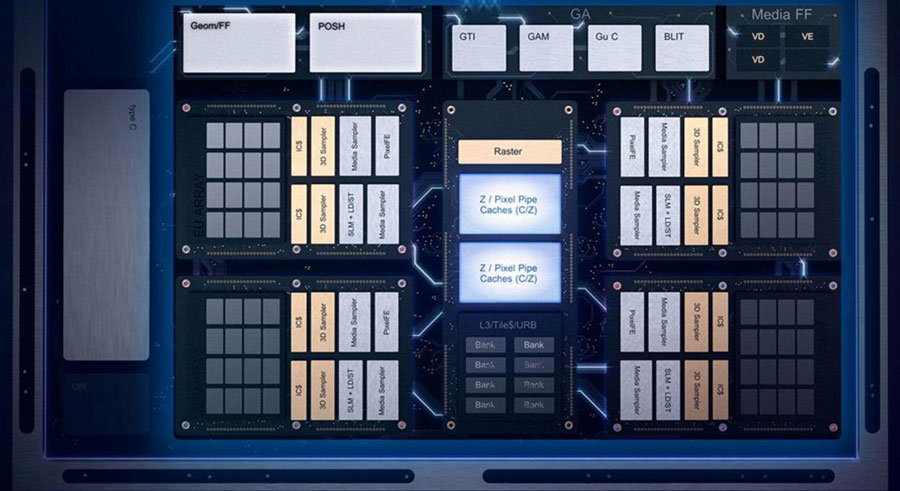A little bit about the future of Intel graphics, integrated and discrete

At the recent Intel's Architecture Day 2018, a number of interesting and promising announcements were made, showing the direction of the company's movement over the next few years. In this post we will focus on news related to Intel graphics: the new generation of the graphics core for Core processors, as well as the discrete graphics adapter from Intel, which has now received its name.
Official presentations, such as those demonstrated on Intel's Architecture Day, usually do not contain many technical details, so dear to the heart of Habrazhiteley, but they allow you to lift the veil of secrecy from the products of tomorrow, and so are valuable. As can be seen at KDPV, Intel's GPUs make an impressive leap over a whole generation: after the Gen9 graphics, which appeared in 2015 in Skylake processors, we will see the 11th generation at once. What is known about him now?

Gen11 GPU configuration in GT2 will have 64 Execution Unit against 24 EU in Gen9. These 64 EU are divided into 4 layers, each of which, in turn, is further divided into two sublayers, 8 EU each in a pack. Each sublayer has its own instruction cache and 3D sampler. The layer above has two media samplers, its PixelFE and a load / storage module. This architecture allows to increase the energy efficiency of the core, its performance, improve the performance of displaying 3D and 2D objects and increase the gaming potential of the processor.

The fact that GPU Gen11 performance for the first time in the Intel lineup exceeded 1 TFLOPS stands out in particular. To achieve this performance, Intel redesigned the Floating Point Unit (FPU) interfaces within the EU, increasing the speed with FP16 twice. In total, the GPU will have 256 pipelines; to provide them with data, the memory interface was reworked and the GPU L3 cache increased 4 times, up to 3 MB.
We list other features of the novelty. First, it is tile rendering (tile-based rendering), which can be enabled if necessary. It does not always cause a performance boost, but in general, it has a positive effect in the cramped conditions of the integrated graphics core. Secondly, the memory compression mechanism without loss was improved on average by 4%. The GTI interface now supports 64 bytes per clock, which also affects the improvement of the memory interface. Finally, thirdly, Coarse Pixel Shading technology, an analogue of NVIDIA's Variable Pixel Shading, is introduced, which reduces the computational load when calculating shadows.

And finally, a few words about the next generation of Intel graphics, which had the working name Gen12 and now received the official name Intel X e. As you can see, within its framework it is planned to prepare products for all market niches: integrated graphics, discrete budget and advanced, as well as solutions for data centers. Intel X e will be produced on 10-nm process technology, it will complement such classes of Intel products as CPU, FPGA and others; the ideology is to unify work with all these various devices at the expense of a single API. Unfortunately, this is all that is now known about Intel X e .
